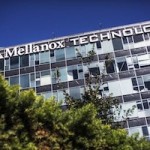Today Fujitsu launched of the Digital Platform Experimentation Project in Singapore. In cooperation with A*STAR and SMU, the Project marks the world’s 1st on-premises installation of the Fujitsu Quantum-Inspired Computing Digital Annealer. “The Digital Annealer will play an important role in this initiative by allowing the partners to explore novel problem-solving approaches and methodologies for a wide variety of potential real-world applications. Use cases to date include portfolio optimization, drug discovery, factory optimization, inventory management, and digital marketing.”
John Gustafson to host BoF on Posit Arithmetic at SC17
John Gustafson from A*STAR will host a BoF on Posit arithmetic at SC17. Entitled, “Improving Numerical Computation with Practical Tools and Novel Computer Arithmetic,” this BOF will be co-hosted by Mike Lam with discussions on tools for measuring floating point accuracy. “This approach obtains more accurate answers than floating-point arithmetic yet uses fewer bits in many cases, saving memory, bandwidth, energy, and power.”
Beating Floating Point at its own game: Posit Arithmetic
“Dr. Gustafson has recently finished writing a book, The End of Error: Unum Computing, that presents a new approach to computer arithmetic: the unum. The universal number, or unum format, encompasses all IEEE floating-point formats as well as fixed-point and exact integer arithmetic. This approach obtains more accurate answers than floating-point arithmetic yet uses fewer bits in many cases, saving memory, bandwidth, energy, and power.”
John Gustafson presents: Beyond Floating Point – Next Generation Computer Arithmetic
“A new data type called a “posit” is designed for direct drop-in replacement for IEEE Standard 754 floats. Unlike unum arithmetic, posits do not require interval-type mathematics or variable size operands, and they round if an answer is inexact, much the way floats do. However, they provide compelling advantages over floats, including simpler hardware implementation that scales from as few as two-bit operands to thousands of bits. For any bit width, they have a larger dynamic range, higher accuracy, better closure under arithmetic operations, and simpler exception-handling.”
Asia’s First Supercomputing Magazine Launches from Singapore
Singapore-based publisher Asian Scientist has launched Supercomputing Asia, a new print title dedicated to tracking the latest developments in high performance computing across the region and making supercomputing accessible to the layman. “Aside from well-established supercomputing powerhouses like Japan and emerging new players like China, Asian countries like Singapore and South Korea have recognized the transformational power of supercomputers and invested accordingly. We hope that this new publication will provide a unique insight into the exciting developments in this region,” said Dr. Rebecca Tan, Managing Editor of Supercomputing Asia.
InfiniCortex and the Renaissance in Polish Supercomputing
“Over the past two years, InfiniCortex has clearly demonstrated that IB can perform over trans-continental distances, exploiting this technology to create a “Galaxy of Supercomputers,” a worldwide IB network spanning sites across Asia, Europe and North America. Initiated and led by A*STAR CRC in Singapore, the project hit its first major breakthrough at SC14, showcasing a first-time-ever 100G IB transcontinental connection from Singapore to the SC14 venue in New Orleans.”
Asetek Lands Nine Installations on the Green500
“As seen at installations included on both the Green500 and Top500 lists, Asetek’s distributed liquid cooling architecture enables cluster energy efficiency in addition to sustained and un-throttled cluster performance,” said John Hamill, Vice President of WW Sales and Marketing. “Around the world, data centers are increasingly using Asetek technology for High Performance Computing while reducing energy costs.”
Asetek Sports Eight Installations on the TOP500 Supercomputer List
“With the accelerating trend of higher wattages and the continuing requirement of high density, the need for adaptable, cost effective, and reliable liquid cooling is accelerating among those striving to obtain TOP500 status,” said John Hamill, Vice President of WW Sales and Marketing. “This need is exactly what Asetek’s distributed cooling architecture provides.”
Mellanox Opens New Singapore Headquarters to Strengthen HPC in Asia
Today Mellanox announced the opening of its new APAC headquarters and solutions centre in Singapore. The Company’s new APAC headquarters will feature a technology solution centre for showcasing the latest technologies from Mellanox, in addition to an executive briefing facility. The solution centre will feature the innovative solutions enabled by latest Mellanox technologies including HPC, Cloud, Big Data, and storage.
Podcast: John Gustafson on What’s Next for Parallel Computing
In this podcast from Radio New Zealand, John Gustafson from the A*STAR Agency for Science, Technology and Research discusses parallelism and high performance computing. Gustafson is the father of Gustafson’s Law, which gives the theoretical speedup in latency of the execution of a task at fixed execution time that can be expected of a system whose resources are improved.











